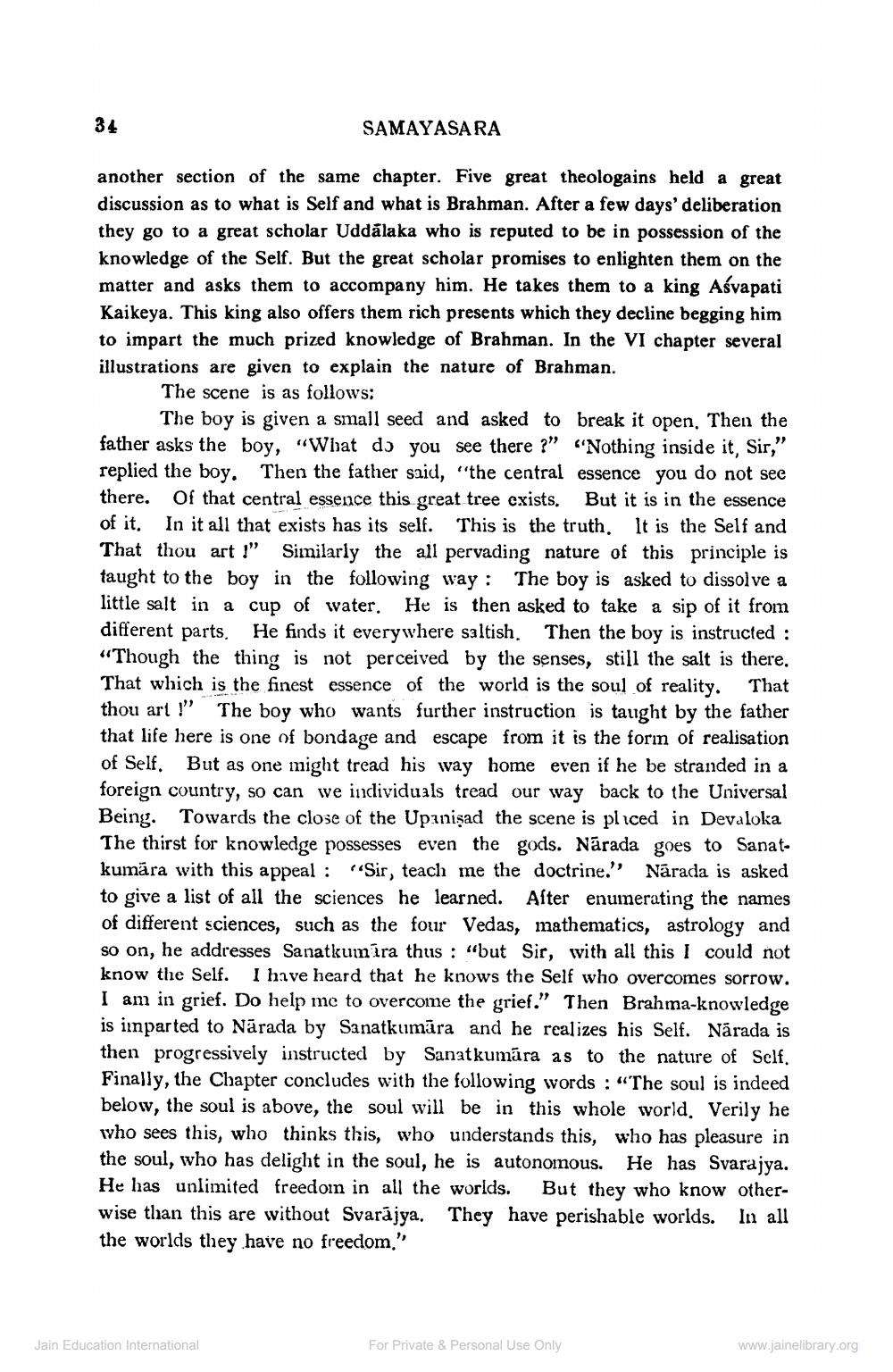________________
34
SAMAYASARA
another section of the same chapter. Five great theologains held a great discussion as to what is Self and what is Brahman. After a few days' deliberation they go to a great scholar Uddalaka who is reputed to be in possession of the knowledge of the Self. But the great scholar promises to enlighten them on the matter and asks them to accompany him. He takes them to a king Aśvapati Kaikeya. This king also offers them rich presents which they decline begging him to impart the much prized knowledge of Brahman. In the VI chapter several illustrations are given to explain the nature of Brahman.
The scene is as follows:
The boy is given a small seed and asked to break it open. Then the father asks the boy, "What do you see there ?" "Nothing inside it, Sir," replied the boy. Then the father said, "the central essence you do not see there. Of that central essence this great tree exists. But it is in the essence of it. In it all that exists has its self. This is the truth. It is the Self and That thou art !" Similarly the all pervading nature of this principle is taught to the boy in the following way: The boy is asked to dissolve a little salt in a cup of water. He is then asked to take a sip of it from different parts. He finds it everywhere saltish. Then the boy is instructed : “Though the thing is not perceived by the senses, still the salt is there. That which is the finest essence of the world is the soul of reality. That thou art !" The boy who wants further instruction is taught by the father that life here is one of bondage and escape from it is the forın of realisation of Self. But as one might tread his way home even if he be stranded in a foreign country, so can we individuals tread our way back to the Universal Being. Towards the close of the Upanişad the scene is pliced in Devaloka The thirst for knowledge possesses even the gods. Nārada goes to Sanatkumāra with this appeal : "Sir, teach me the doctrine.” Nārada is asked to give a list of all the sciences he learned. After enumerating the names of different sciences, such as the four Vedas, mathematics, astrology and so on, he addresses Sanatkum ára thus : "but Sir, with all this I could not know the Self. I have heard that he knows the Self who overcomes sorrow. I am in grief. Do help me to overcome the grief.” Then Brahma-knowledge is iinparted to Nārada by Sanatkumāra and he realizes his Self. Nārada is then progressively instructed by Sanatkumāra as to the nature of Self. Finally, the Chapter concludes with the following words : "The soul is indeed below, the soul is above, the soul will be in this whole world. Verily he who sees this, who thinks this, who understands this, who has pleasure in the soul, who has delight in the soul, he is autonomous. He has Svarajya. He has unlimited freedoin in all the worlds. But they who know otherwise than this are without Svarājya. They have perishable worlds. In all the worlds they have no freedom.'
Jain Education International
For Private & Personal Use Only
www.jainelibrary.org




